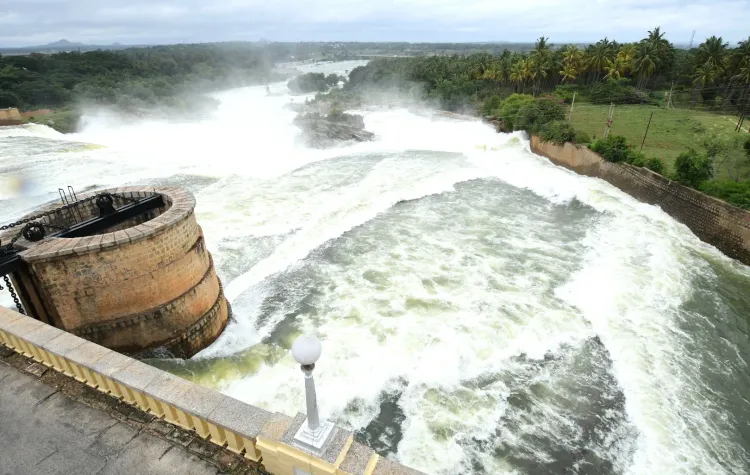Has the Hydro Plant in Himachal Recovered from the Deadliest Flood?

Synopsis
Key Takeaways
- Restoration of Larji Hydroelectric Power Project after a catastrophic flood.
- Investment of Rs 250 crore for rehabilitation efforts.
- Implementation of preventive measures against future natural disasters.
- Rapid recovery highlights the government's commitment.
- Historical flood data shows the severity of the 2023 event.
Shimla, May 18 (NationPress) The 126 MW Larji Hydroelectric Power Project situated in Kullu district of Himachal Pradesh, which experienced one of the most catastrophic floods in the last seven decades, is now back in operation with a budget of nearly Rs 250 crore, as announced by the government on Sunday.
This facility was severely impacted by flooding in the Beas River on July 9, 2023. The rapid restoration of the project, finalized in under two years, has been made possible due to the proactive intervention and support from the state government, which helped avert significant financial setbacks.
The government initially allocated Rs 25 crore for its restoration, followed by Rs 35 crore and Rs 185.87 crore for the complete rehabilitation of the project.
The Chief Minister praised the engineers and personnel of the Himachal Pradesh State Electricity Board Ltd (HPSEBL) for their relentless efforts and dedication to restoring operations.
Unit I of the Larji Power Project was reactivated on January 15, 2024, and synchronized with the power grid on May 2. Unit II followed suit on August 9, 2024, while Unit III was restored on January 17, 2025. With all three turbines now functioning, the project has fully resumed power generation. The flood caused significant mud deposition deep within the turbine units, rendering them non-operational for several months.
As mechanical removal was unfeasible, the debris was painstakingly cleared manually. To further protect the project from potential future natural disasters, several preventive measures have been instituted.
The government reported that slope stabilization work, which includes the installation of cable nets and rockfall barriers, has been completed near the surge shaft gates and is ongoing at the powerhouse entrance to reduce risks from landslides and falling debris.
Moreover, a hinged gate has been installed at the Main Access Tunnel to prevent water ingress during severe flooding. A similar gate is under construction at the emergency exit tunnel, accompanied by supporting civil works to ensure a secure, watertight system.
Historically, in 1953, a significant flood hit the Larji Hydro Electric Project, marking a historical flood high. The flood recorded on August 3, 1953, had a discharge of 3,838.37 cumecs, while the flood in 2023, with a discharge of 5,600 cumecs, substantially surpassed the 1953 flood.









